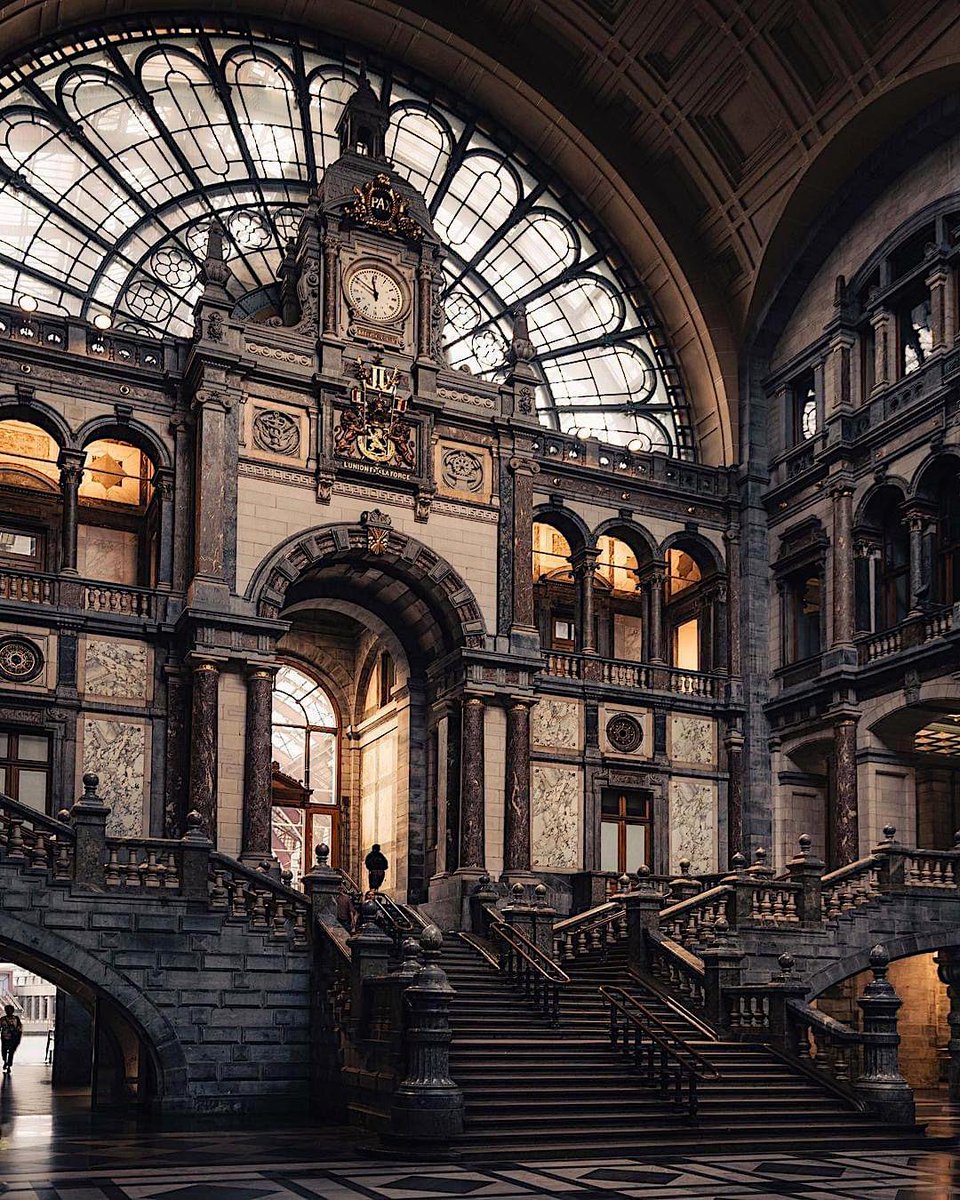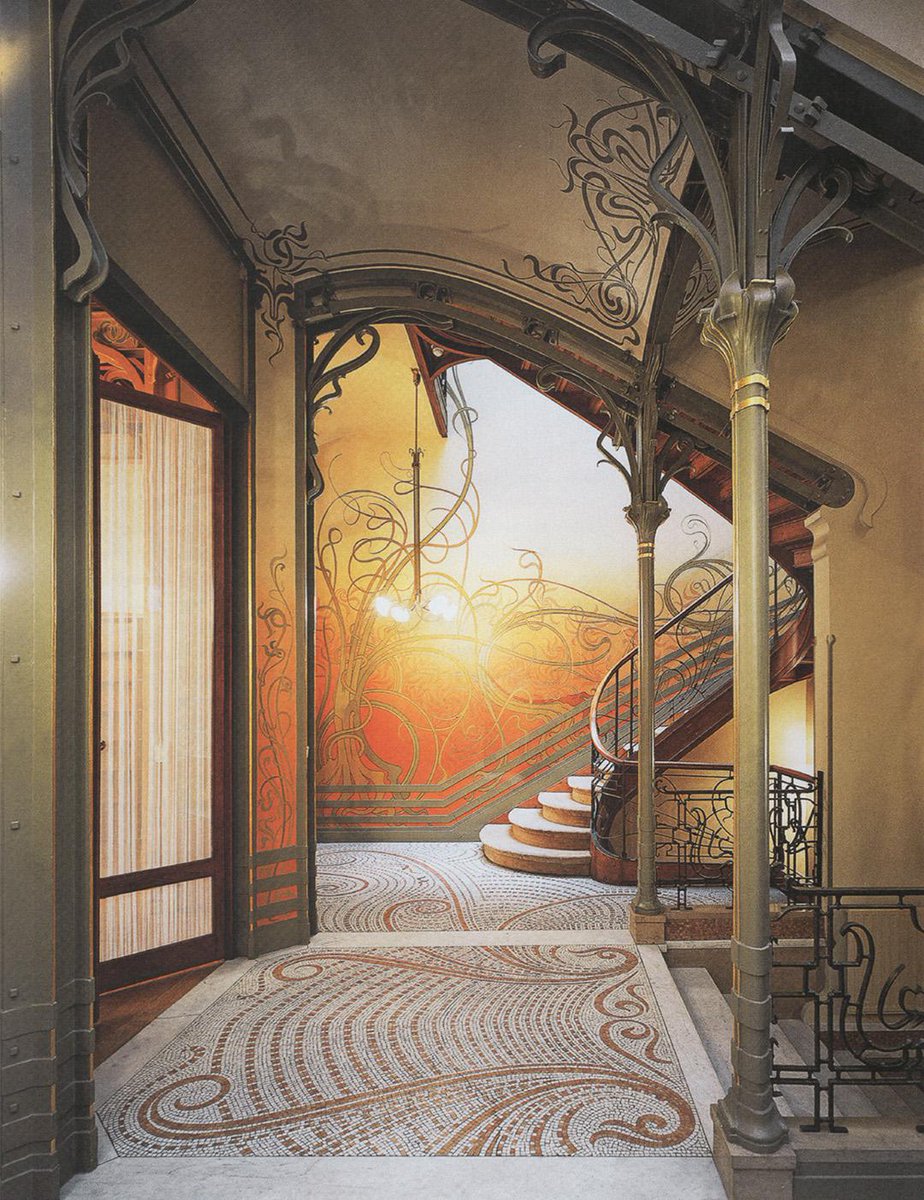On this day 197 years ago the world's first ever public railway was opened in northern England.
And a whole new form of architecture was born: the train station.
So, to celebrate, here are some of the world's greatest train stations...
And a whole new form of architecture was born: the train station.
So, to celebrate, here are some of the world's greatest train stations...

The best place to start is with the world's oldest surviving grand terminus — Liverpool Lime Street in England, opened in 1836.
The station hotel, pictured here, was built in 1871 like a French château in the Second Empire style.
The station hotel, pictured here, was built in 1871 like a French château in the Second Empire style.

It became clear, as rail travel exploded in popularity, that every city would need a central station.
They had to function as transport hubs first of all; but they were also important civic structures.
It was the first place visitors would see, so why not make it beautiful?


They had to function as transport hubs first of all; but they were also important civic structures.
It was the first place visitors would see, so why not make it beautiful?


And so train stations — for which there was plenty of funding, given that rail was then a cutting-edge, world-changing technology — became an opportunity for grand architectural projects.
Antwerp Station in Belgium (1905) is almost impossibly lavish.


Antwerp Station in Belgium (1905) is almost impossibly lavish.


Then there's something like Chhatrapati Shivaji Terminus in Mumbai.
It was built in 1888 and combines Indian, Islamic, and Victorian Neo-Gothic architecture into one extraordinary — and totally unique — building.



It was built in 1888 and combines Indian, Islamic, and Victorian Neo-Gothic architecture into one extraordinary — and totally unique — building.



There were critics who argued that this was an abuse of architecture, and that it was wrong to use such beautiful and historical styles for buildings which were essentially industrial.
Something like Genova Brignole station, built in 1905, looks like a palace.
Something like Genova Brignole station, built in 1905, looks like a palace.

Was there any value to this criticism? Perhaps, but it didn't stop the projects coming thick and fast — and many people today are grateful for it.
Whether Gare du Nord in Paris, Milano Centrale, Wrocław Główny, or Desamparados Station in Lima, wonderful stations kept appearing.




Whether Gare du Nord in Paris, Milano Centrale, Wrocław Główny, or Desamparados Station in Lima, wonderful stations kept appearing.




Soon hotels were integrated into stations, too, and this offered a further chance for architectural grandeur.
At St Pancras Station in London the Midland Grand Hotel, designed by George Gilbert Scott in 1873, was the zenith of Victorian neo-Gothic exuberance:


At St Pancras Station in London the Midland Grand Hotel, designed by George Gilbert Scott in 1873, was the zenith of Victorian neo-Gothic exuberance:


But train stations aren't only about domes, colonnades, and ornament; they also represent some of the world's great industrial architecture.
Along with its hotel St Pancras has a colossal train shed which is 200m long, 75m wide, and 30m tall.
Architecture & engineering united.
Along with its hotel St Pancras has a colossal train shed which is 200m long, 75m wide, and 30m tall.
Architecture & engineering united.

It would also be wrong not to mention underground train stations. The very first was Baker Street in London, built in 1863 and still going strong.
Since then metro stations have become home to some of the most beautiful, inventive, and peculiar architecture in the world:




Since then metro stations have become home to some of the most beautiful, inventive, and peculiar architecture in the world:




Of course, not all great train stations have survived.
The old Penn Station in New York is the most famous casualty of what now seem like short-sighted decisions in the 20th century.
A leviathan of American Beaux-Arts built in 1910 and destroyed in 1963.


The old Penn Station in New York is the most famous casualty of what now seem like short-sighted decisions in the 20th century.
A leviathan of American Beaux-Arts built in 1910 and destroyed in 1963.


But the USA has lost far more than just Penn Station.
All of the stations in this image have been demolished, sometimes with good reason, but surely these buildings — even if obsolete — could have been preserved and given a new purpose.
All of the stations in this image have been demolished, sometimes with good reason, but surely these buildings — even if obsolete — could have been preserved and given a new purpose.

Even as trains have been challenged by automobiles, the importance of urban rail transportation remains intact.
New stations, like their precursors in the 19th century, are still grand projects of major civic significance.
Beijing West, built in 1996, is unmissable.
New stations, like their precursors in the 19th century, are still grand projects of major civic significance.
Beijing West, built in 1996, is unmissable.

And "celebrity architects" are often recruited for these grand projects, like Zaha Hadid's Napoli-Afragola Station.
The style may have changed — no more 19th century revivalist architecture — but the idea that stations are a chance to make a statement has gone nowhere.
The style may have changed — no more 19th century revivalist architecture — but the idea that stations are a chance to make a statement has gone nowhere.

And stations, by virtue of being in constant use, are always undergoing restoration and expansion.
Kanazawa Station in Japan opened in 1898, but its architecture has evolved a great deal since then.
Kanazawa Station in Japan opened in 1898, but its architecture has evolved a great deal since then.

The list goes on, from Maputo Central and Soarano Station to São Paulo's Luz Station and Madrid Atocha.
Train stations represent the perfect union of architecture, engineering, and public interest; there's surely a great deal we could learn today from this rich, global heritage.
Train stations represent the perfect union of architecture, engineering, and public interest; there's surely a great deal we could learn today from this rich, global heritage.
• • •
Missing some Tweet in this thread? You can try to
force a refresh






















